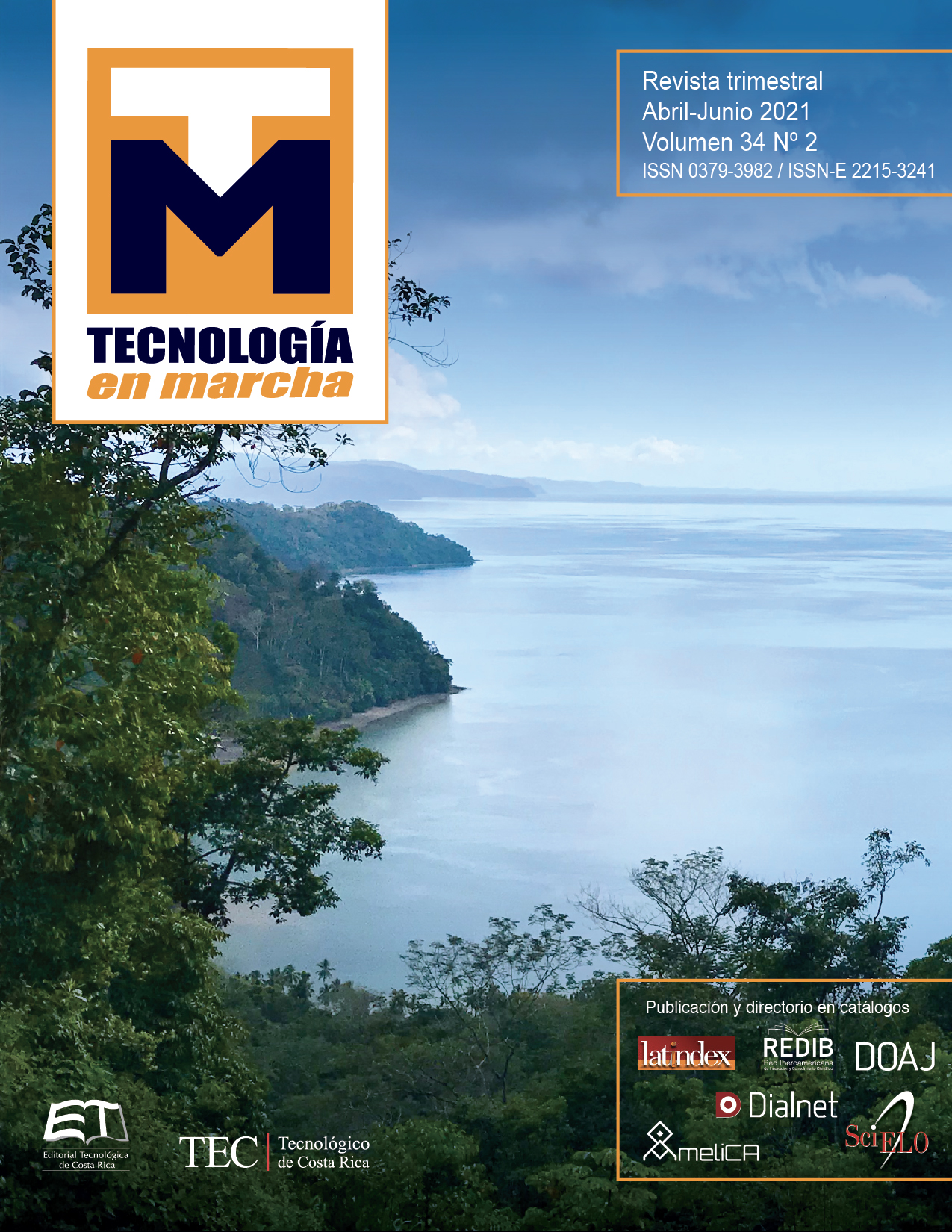Establishment of a protocol for the induction of indirect somatic embryogenesis in Allium sativum (Costa Rican Creole Gralic)
Main Article Content
Abstract
The garlic (Allium sativum), has medicinal and culinary properties, as well as repellent properties that can be used in organic agriculture, which makes it a crop with high demand in our country and in the rest of the world. In Costa Rica there is a native material, much appreciated by the national consumer for its organoleptic qualities, such as taste and smell. The lack of quality seed and lack of material adapted to tropical conditions, as well as the price competition with garlic imported from China and Guatemala (since it is imported at very low prices per kilo), makes it difficult to place it in the markets Nationals Therefore, this research was proposed with the aim of obtaining somatic embryos indirectly and regenerating seedlings free of viruses and other pathogens, to be used as a method of vegetative propagation. The explants used for the induction of callogenesis were radical meristems. The callus was induced in M&S culture medium (1962), with 3% sucrose and pH 5,7, supplemented with 1,0 mg/L, naphthalenacetic acid (ANA), 2,0 mg/L benzyl-amino purine (BAP) and 0,5 mg/L 2,4-dichlorophenoxyacetic acid (2,4-D). The proliferation of the calluses was obtained by subculturing them in the M&S medium (1962), with 3% sucrose and pH 5,7 supplemented 1 mg/L BAP and 0,25 mg/L of 2,4-D, per month The formation of globular embryos was observed. Embryonic maturation was obtained with the addition of 0,5 mg/L of AG3 and for germination with 0,5 mg/L of BAP.
Article Details

This work is licensed under a Creative Commons Attribution-NonCommercial-NoDerivatives 4.0 International License.
Los autores conservan los derechos de autor y ceden a la revista el derecho de la primera publicación y pueda editarlo, reproducirlo, distribuirlo, exhibirlo y comunicarlo en el país y en el extranjero mediante medios impresos y electrónicos. Asimismo, asumen el compromiso sobre cualquier litigio o reclamación relacionada con derechos de propiedad intelectual, exonerando de responsabilidad a la Editorial Tecnológica de Costa Rica. Además, se establece que los autores pueden realizar otros acuerdos contractuales independientes y adicionales para la distribución no exclusiva de la versión del artículo publicado en esta revista (p. ej., incluirlo en un repositorio institucional o publicarlo en un libro) siempre que indiquen claramente que el trabajo se publicó por primera vez en esta revista.
References
[2] A. Guillén, C. Zúñiga, J. Brenes, L. Hilje, R. Chacón, y W. Rivera, Cultivo del ajo en Costa Rica. Costa Rica: EUNED, 2013.
[3] L. Pérez Moreno, E. Palemón Alberto, S. Ayvar-Serna, y E. Cevallos Ruiz, «Adaptación de cultivares de ajo morado y blanco (“Allium sativum” L.) en Acatlán, Guerrero, México», Acta Universitaria, ISSN 0188-6266, Vol. 15, No. 1, 2005, pags. 55-65, vol. 15, pp. 55-65, ene. 2005.
[4] M. Reveles-Hernández, R. Velásquez-Valle, y Á. G. Bravo-Lozano, «Tecnología para el cultivar ajo en Zacatecas», p. 294, 2009.
[5] J. I. Cubero, Introducción a la mejora genética vegetal, 3a ed. España: Mundi-Prensa Libros, 2013.
[6] T. Murashige y F. Skoog, «A Revised Medium for Rapid Growth and Bio Assays with Tobacco Tissue Cultures», Physiol Plant, vol. 15, n.o 3, pp. 473-497, jul. 1962.
[7] S. A. Nasim, A. Mujib, R. Kapoor, S. Fatima, y J. Aslam, «Somatic embryogenesis in Allium sativum L. (cv. Yamuna Safed 3): Improving embryo maturation and germination with PGRs and carbohydrates», Anales de Biología, vol. 32, pp. 1-9, 2010.
[8] V. Parra Vega, «Aspectos básicos y aplicados de la inducción de embriogénesis en microsporas de pimiento y colza», Tesis Doctoral, Universitat Politécnica de Valéncia, España, 2015.
[9] E. Hernandez, «Embriogénesis somática in vitro y aclimatación de plántulas obtenidas por organogénesis directa en heliconia spp», Tesis Doctoral, Institución de Enseñanza e Investigación en Ciencias Agrícolas, México, 2013.
[10] A. Fehér, «The initiation phase of somatic embryogenesis: what we know and what we don’t», Acta Biologica Szegediensis, vol. 52, pp. 53-56, 2008.
[11] X. Yang y X. Zhang, «Regulation of Somatic Embryogenesis in Higher Plants», Critical Reviews in Plant Sciences, vol. 29, n.o 1, pp. 36-57, ene. 2010.
[12] S. de J. Martínez et al., «Maduración y germinación de embriones somáticos de Sorghum bicolor (L.) Moench cultivar ‘CIAP 132R-05’», Biotecnología Vegetal, vol. 17, n.o 1, mar. 2017.
[13] A. Lara, R. Valverde, y L. Gómez, «HISTOLOGÍA DE EMBRIONES SOMÁTICOS Y BROTES ADVENTICIOS», AGRONOMÍA COSTARRICENSE, vol. 27, pp. 37-48, 2003.
[14] A. Espinosa, J. Silva, S. Sariego, L. Cholo Masapanta, y H. Delgado, «Efecto del tipo de explante y la concentración de ácido 2,4-diclorofenoxiacético en la formación de callos en Morus alba L.», Pastos y Forrajes, vol. 35, n.o 4, pp. 407-416, dic. 2012.
[15] F. Villanueva, M. Ávila, A. Mansilla, S. Abades, y J. Cáceres, «Efecto de auxinas y citoquininas en el cultivo de tejido de Ahnfeltia plicata (Hudson) Fries, 1836 (Ahnfeltiales, rhodophyta) de la región de magallanes», Anales del Instituto de la Patagonia, vol. 41, n.o 1, pp. 99-111, 2013.
[16] K. Carhuaricra, J. Olivera, J. Gonzales, y J. Rodríguez,

